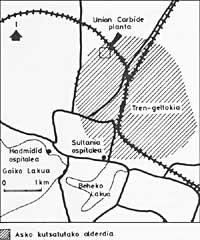Bhopal: trajedia of the third world
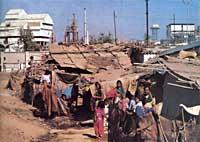
Bhopal is not the only phenomenon. The disaster that occurred at the Union Carbide factory can occur in many other places, even outside the Third World. Many chemical industries are dangerous and we should not hide them. In addition, residents in the vicinity, and especially those who govern them, should be aware of this danger so that nothing more like Bhopal happens.
What is left to us as a memory of Bhopal? Many dead and mutilated, and perhaps the strongest international legal conflict. Days after the accident, 2500 people died. However, the Indian authorities claim that there were 1754 deaths. After the chaotic situation after the escape of methyl isocyanate, these two figures can be uncertain. Many bodies were buried, burned or thrown into rivers before identification and registration. Some sources point out that the official figure announced by the authorities could triple.
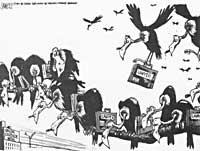
On the other hand, the number of intoxicated people is much better known. It was about 17,000 thousand. Of these, 1200 were in a critical situation and were transferred to nearby hospitals (fortunately they were not in the contaminated area). Most of these victims presented visual and respiratory problems. In addition, according to the studies carried out, 18% of those intoxicated will suffer permanent psychological problems.
Madya-Pradesh, one of India's most proven states, has suffered a major blow with the Bhopal accident.
Black night
Does anyone know what happened the night from December 2 to 3? The truth is that there is nothing clear, although both Indians and Americans and research groups have produced official reports.
The drama took place in the warehouse of the methyl isocyanate of the Union Carbide plant. This chemical plant extends over 6.8 hectares, where nearly a thousand workers work. Some of them are outsourced and most are unqualified. Methyl isocyanate is one of the basic raw materials for the manufacture of insecticidal carbaryl, which belongs to the carbamate family.
By 9 p.m. on 2 December, unqualified personnel were clearing access to the methyl isocyanate from one of the three storage tanks. It seems that in these cases no return valves have been placed that must be put in place. During work the tank contains approximately 25 tons of methyl izosianate. In principle, when two barrels are working, the third must be empty by safety standards. Unfortunately this did not happen that day. Normally, methyl isocyanate should be kept in liquid state (at 0º C). A cooling system is used for this purpose. However, in the Bhopal plant the cooling system had been unworked for 5 months, so the temperature inside the tank was 15-20ºC.
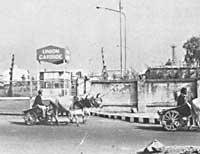
Moreover, methyl isocyanate should be maintained at a nitrogen pressure of 2.6 bar. Pressure control from the control room. On the afternoon of December 2, for unknown reasons, the pressure was only 0.14 bar. At 11 p.m., the watchman in the control room realized that the pressure on the tank was 0.69 bar and that the leak was growing. Given the continuous increase in pressure, at 0.15 the guard informed the production manager. The cooling tests of the tank were useless. For fear of the explosion, the worker gave the alarm and at 0.30 escaped.
According to the safety system of the plant, when overcoming the pressure of the tank the 2.76 bar broke the safety valves (rupture discs). Then the gas escaped. Given that at times the pressure was higher than 13.79 bar, the gas escaped at full speed into the atmosphere.
Fugal gas must first pass through two sodium hydroxide washing towers for neutralization. That day they were getting ready and the other did not start. After passing through the washing tower, the remains of methyl isocyanate are burned in the combustion tower. This was also inactive due to maintenance. These conditions caused the leakage of methyl isocyanate (MIC) without being neutralized.
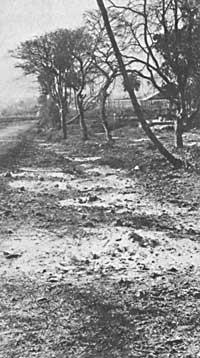
In 0.30 free a dense white cloud covered the factory and neighbouring neighborhoods. The sleeping bhopares felt burns in the eyes and throat and tried to escape. Many failed to get out of bed; many lost their lives on the roads to the hospital or outside the city. At two in the morning, when the factory alarm sounded, only the corpses were around the factory.
Guilty of polymerization?
The chronology we have set out here explains how this unfortunate and terrible accident happened. But is poor security the only cause of the disaster? Concrete causes will never be known. However, a possible origin can be raised.
As methyl isocyanate is an unsaturated compound, when it has a suitable catalyst it has rapid reactions of polymerization. A good catalyst is salt or metal base. Therefore, it is legitimate to think that for an unknown reason (cleaning, maintenance...) some catalyst (soda, pieces of iron) containing methyl isocyanate was introduced. The polymerization of methyl socianate had to release a lot of heat and this heat caused the evaporation of the methyl isocyanate without reacting.
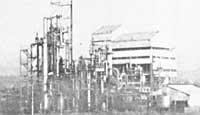
This seems the most direct expression, although some, including the multinational Union Carbide, mention the word sabotage.
Methyl isocyanate: unknown subject
Before Bhopal's trajedia occurred, little was known about the toxicity of methyl isocyanate. It was known for its toxic effects on animals (especially on the airway), but in the books nothing was mentioned about man.
The lack of information about the toxicity of methyl isocyanate led the first doctors who treated drug addicts to suspect that the toxic agent was phosphene (toxic gas used in World War I). In addition, many dead people observed Indian doctors who had symptoms of cyanide acid poisoning. Important concentrations of cyanides were detected during blood tests. Therefore, methyl isocyanate was not the only toxic agent. According to Indian experts, toxic gas was not exclusively methyl isocyanate. 30% of the gas was made up of other substances, including hydro!
How has hydrocyanic acid occurred in the toxic cloud? It is believed that the strong warming produced in the tanks affected pyrolysis of the methyl isocyanate obtaining hydrocyanic acid, nitrogen oxides and carbon.
Unfortunate or negligent?
According to local newspapers in Bhopal, Bhopal was sitting in the mouth of a volcano and no one took action.
The biggest responsibility lies with the American multinational Union Carbide, which had 51% of the shares of the Bhopal pesticide plant. He only knew what the safety situation of the plant was like. He remained silent because he knew that despite losing money, with the manufacture of pesticides he won in other sectors.
Bhopal pesticide plant balances show a continuous decrease in effectiveness. The factory was designed to manufacture 5250 tons/year. In 1982 production was 2308 tons and in 1983 1657 tons. The annual losses (from 4 to 5 million dollars) forced the management of Union Carbide to reduce the costs in personnel and especially in safety.
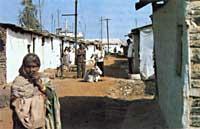
Union Carbide seriously raised the closure of its Bhopal factory, but opposed the local government for the loss of a thousand jobs. Blackmail was effective and the factory continued to work.
In 1984, Union Carbide highlighted the dangers of the production and transport of methyl isocyanate in the safety services of the chemical complexes of the city of the Institute of the USA (Virginia). However, in the multinational companies outside the US, nothing was done to address the risks.
Despite being a twin of the Bhopal plant institute and proclaiming that the Union corrector Carbide had the same security measures, that was not true. India's factory security systems were poorly planned. For example, even if all the security measures mentioned above worked perfectly, 40% of methylisocianate would have gone into the atmosphere in its entirety. The bhopal plant did not have a computer system for detecting methyl isocyanate leaks like the US plant; the watchers had to rely on their nose.
On the other hand, the reduction to half of the factory's maintenance personnel in 1984 caused it to be replaced by eventual unqualified personnel.
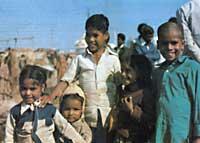
However, the disaster would have been smaller if the authorities had not allowed a shanty town to be built next to the factory.
In addition, the 350 Bhopal doctors did not have information on the dangerousness of the products obtained in the pesticide factory or preventive measures.
Conclusion
The Bhopal disaster has two consequences. On the one hand, the high potential risk of some chemical industries and the need for concrete and rigorous safety measures makes us aware of this. On the other hand, great care must be taken when transferring advanced technologies to the Third World. There may not be qualified personnel for proper use.
And finally, the dirty game of many multinationals can not be forgotten, put abroad what they do not want for home.
Buletina
Bidali zure helbide elektronikoa eta jaso asteroko buletina zure sarrera-ontzian





